Test drive with camouflaged eActros 600 prototype
A car in camouflage is an unusual sight, but a 40-tonne truck in the sprinkled zebra look is even stranger. Voilà, there it is, the eActros 600 in disguise. Strictly speaking, it is not the production model that Daimler Truck invited a small group of media representatives to take a seat in at the main plant in Wörth am Rhein, but a “very close-to-production prototype,” as developers emphasised before the test drive. The world debut of the electric colossus on 10 October can, without doubt, be described as one of the most significant market debuts in the commercial vehicle sector this year. So what can it do, Mercedes’ beacon for long-distance transport?
Before the review of the 20-minute drive, let’s briefly summarise what we already know about the model: the tractor unit houses three battery packs with a total capacity of over 600 kWh between its axles. The type designation 600 is derived from this battery capacity, as with the eActros 300/400 for distribution transport. Like its smaller siblings, the 600 uses an electric rigid axle with two integrated electric drives. These generate a continuous output of 400 kW and a peak output of over 600 kW. The eActros 600 will debut an 800-volt system architecture.
It has been said since the IAA 2022 that the eActros 600, with a range of around 500 kilometres, will go into series production in 2024 and support the upcoming MCS charging standard. According to Daimler Truck, the electric heavyweight can be charged from 20 to 80 per cent in under 30 minutes at MCS chargers with about one megawatt. Another interesting fact is that the manufacturer uses lithium iron phosphate cell technology for the first time with its 40-tonne truck. According to Karin Rådström, CEO of Mercedes-Benz Trucks, that’s because of the long service life and more usable energy. The vehicle is expected to cover 1.2 million kilometres in ten years. We have compiled all other data known to date about the vehicle in this article. In addition to the semitrailer tractor, Mercedes-Benz Trucks plans to build platform chassis variants of the eActros 600 right from the market launch.
But back to the main plant in Wörth and to the still-camouflaged eActros: Despite the camouflage, the vehicle front promises to uniquely stand out from its combustion engine counterparts and electric siblings. The developers announced “clear lines and an aerodynamic design” in advance.
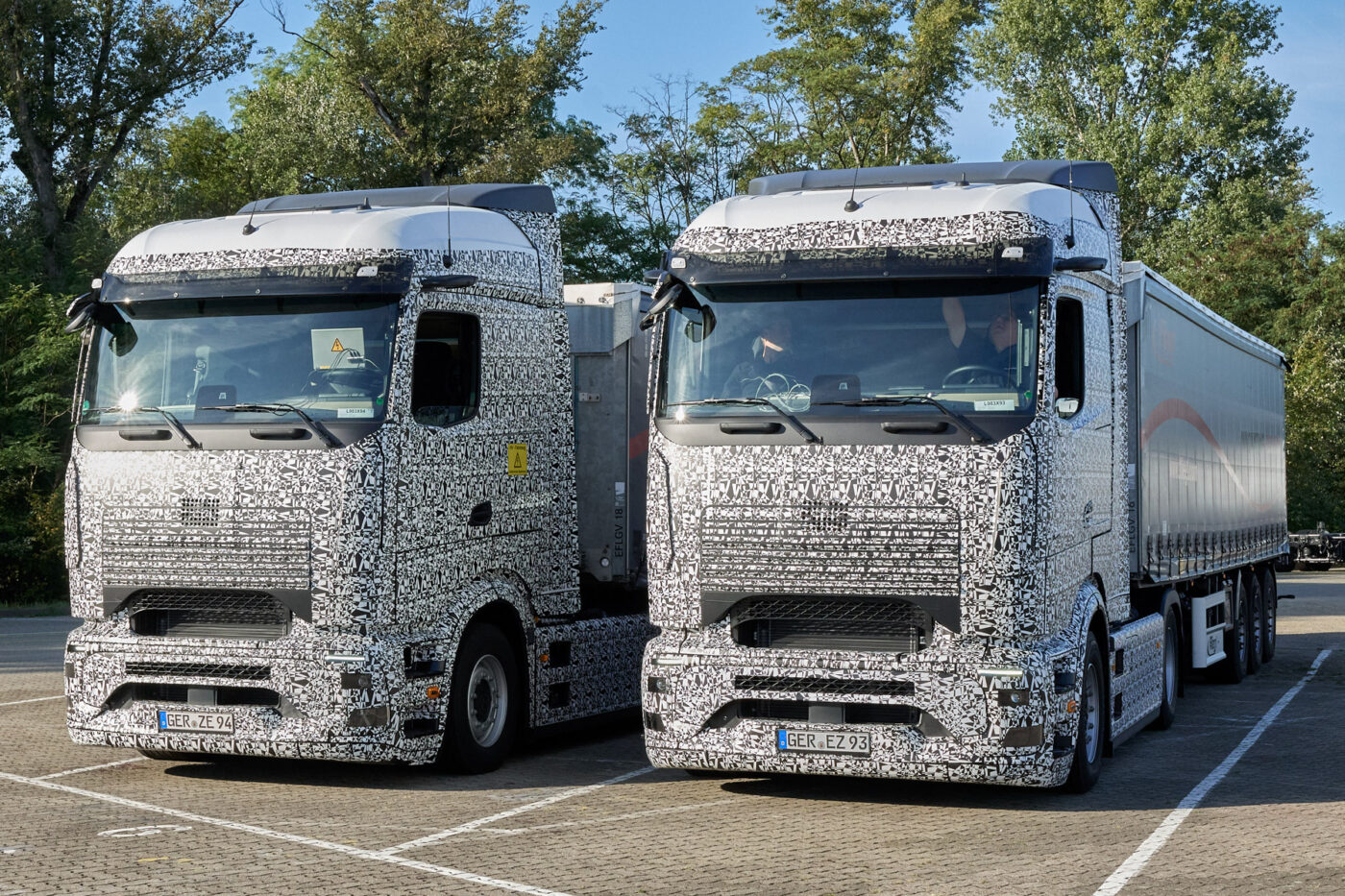
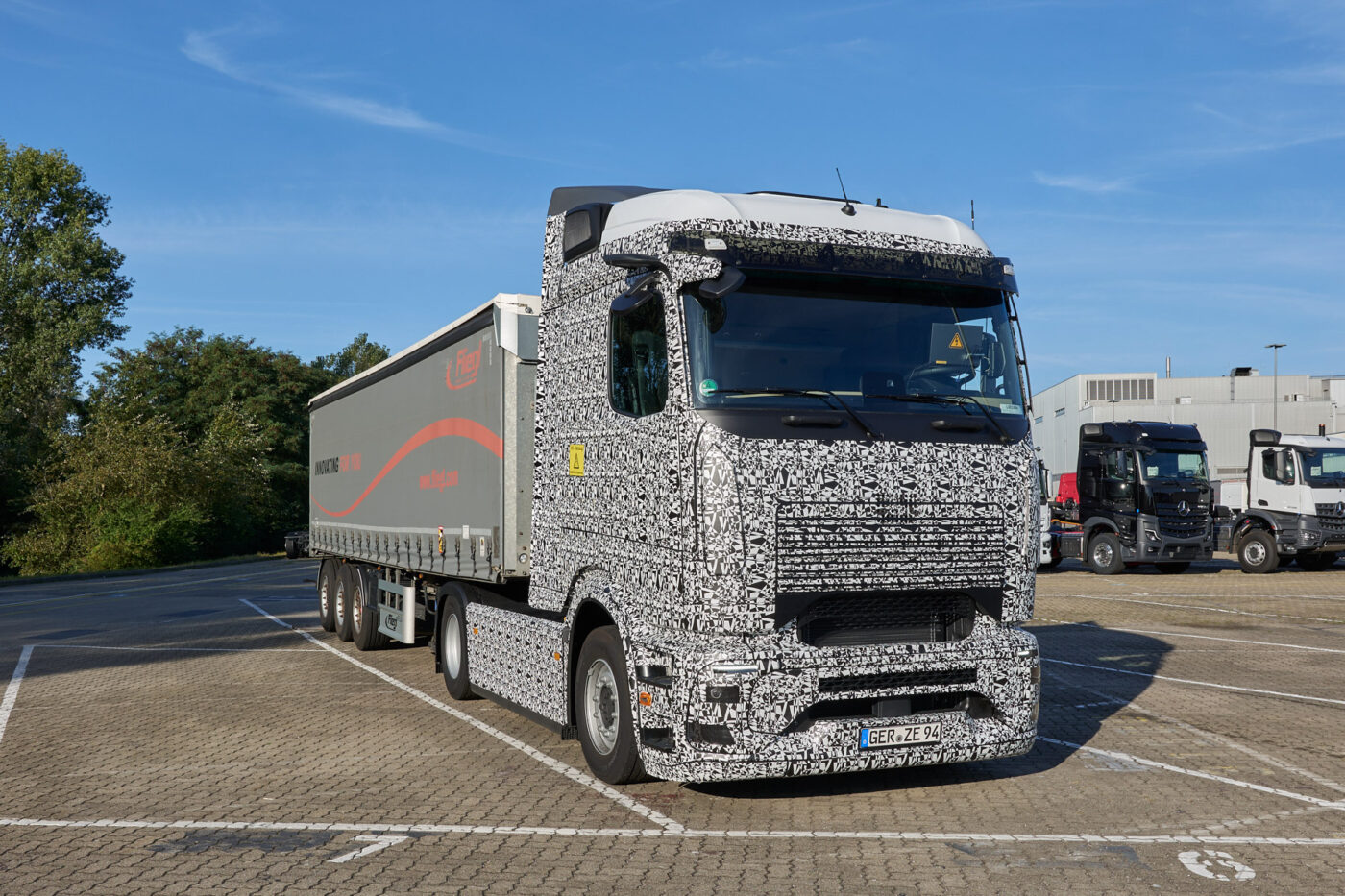
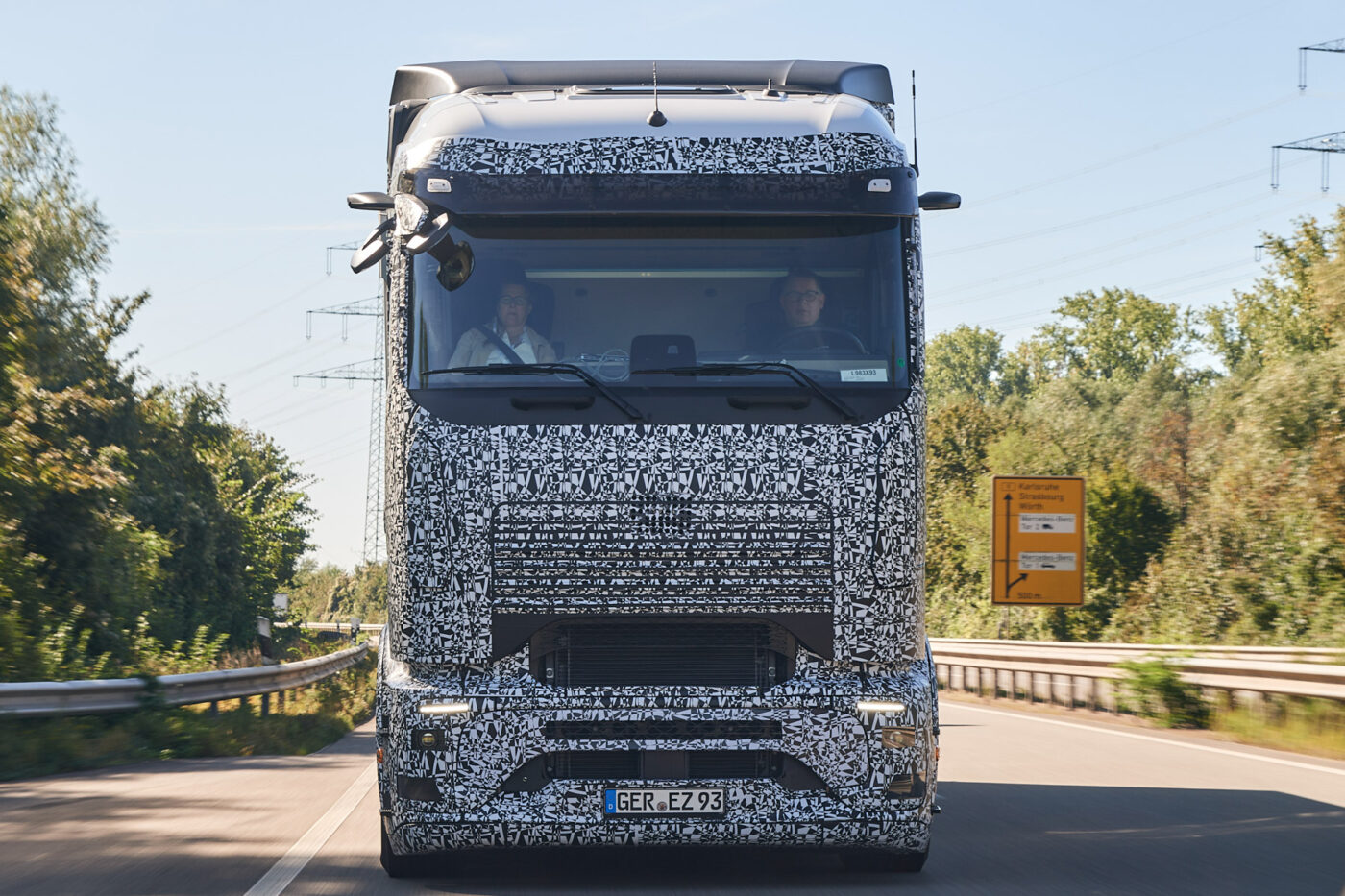
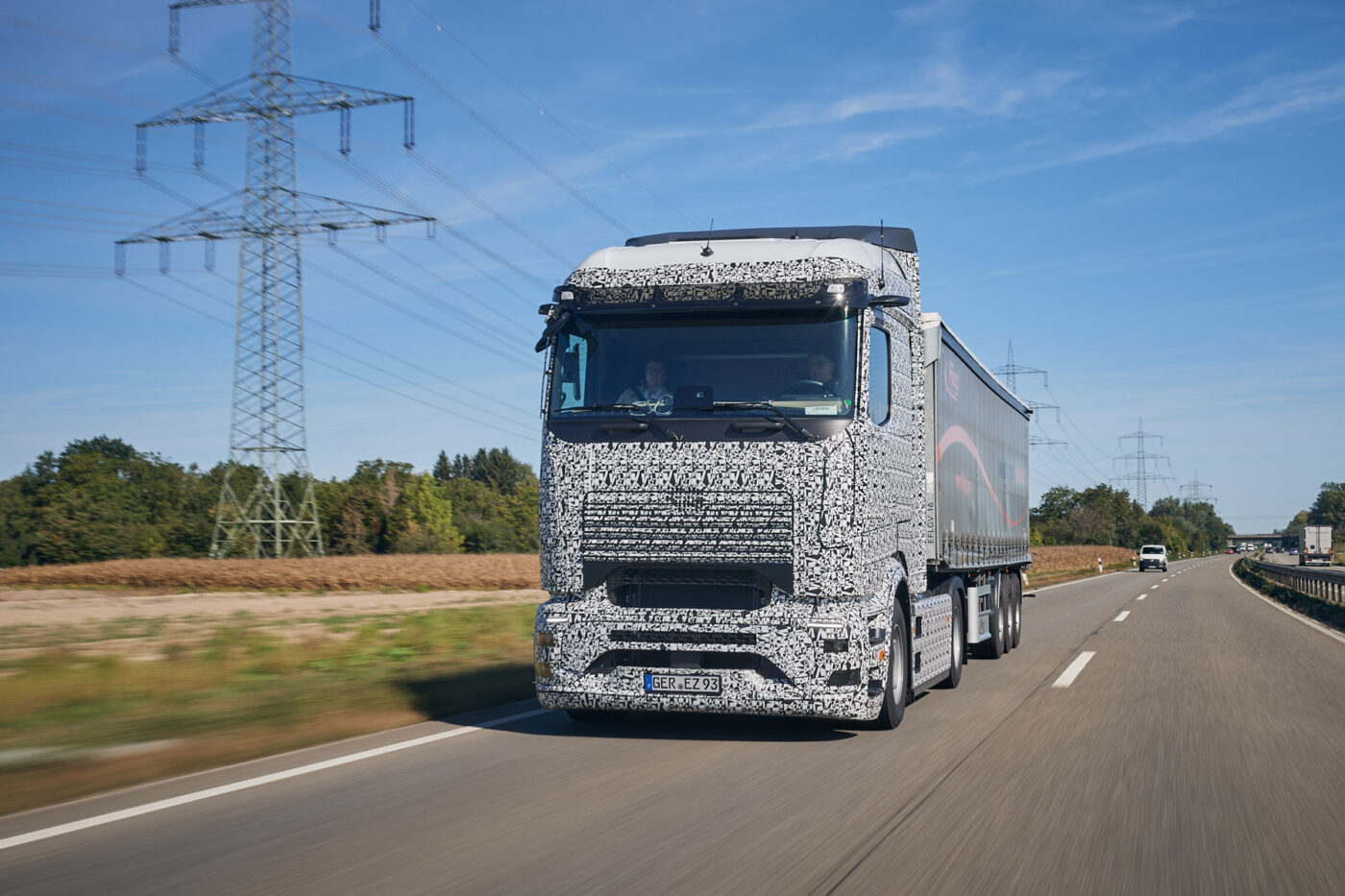
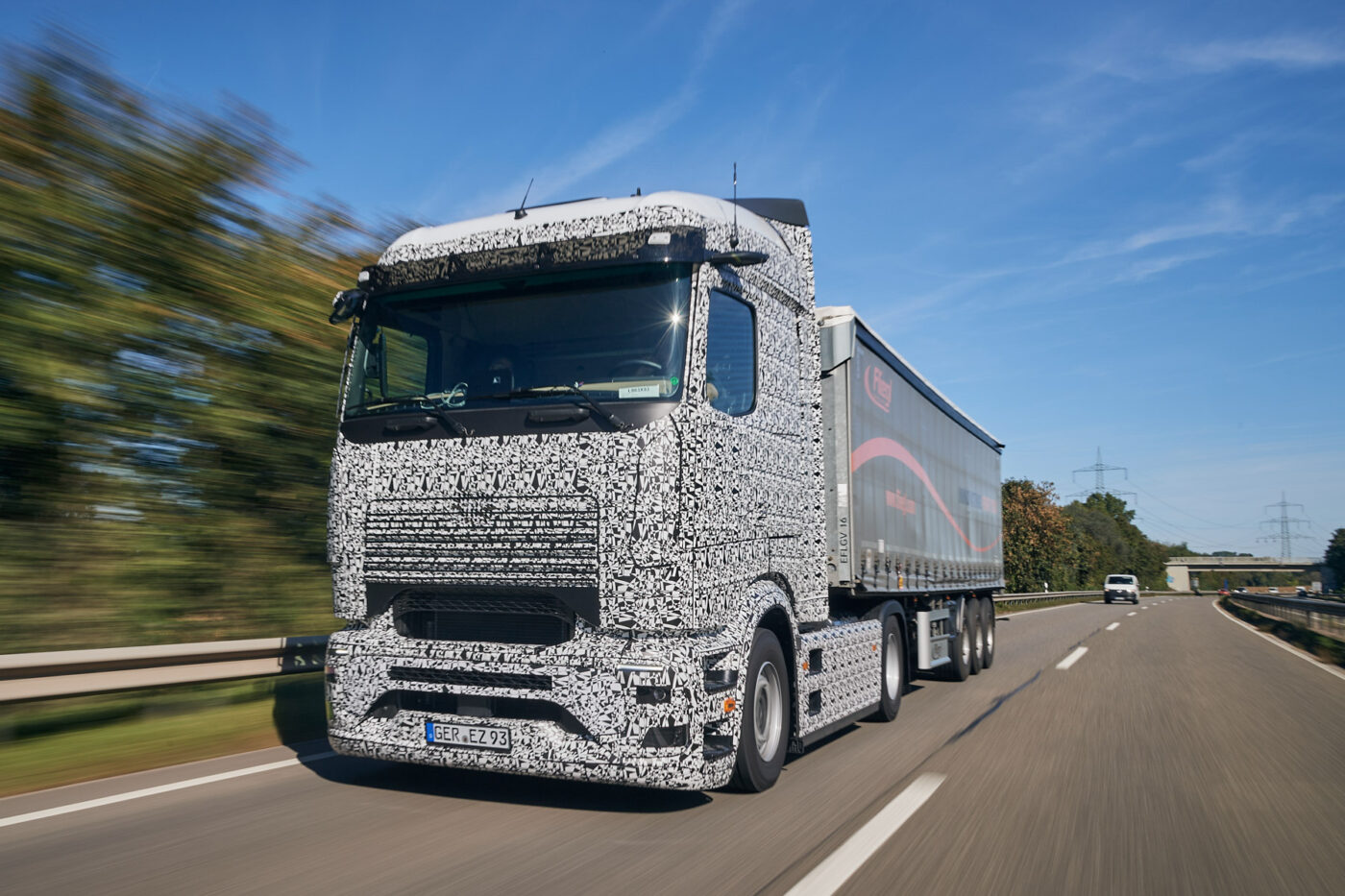
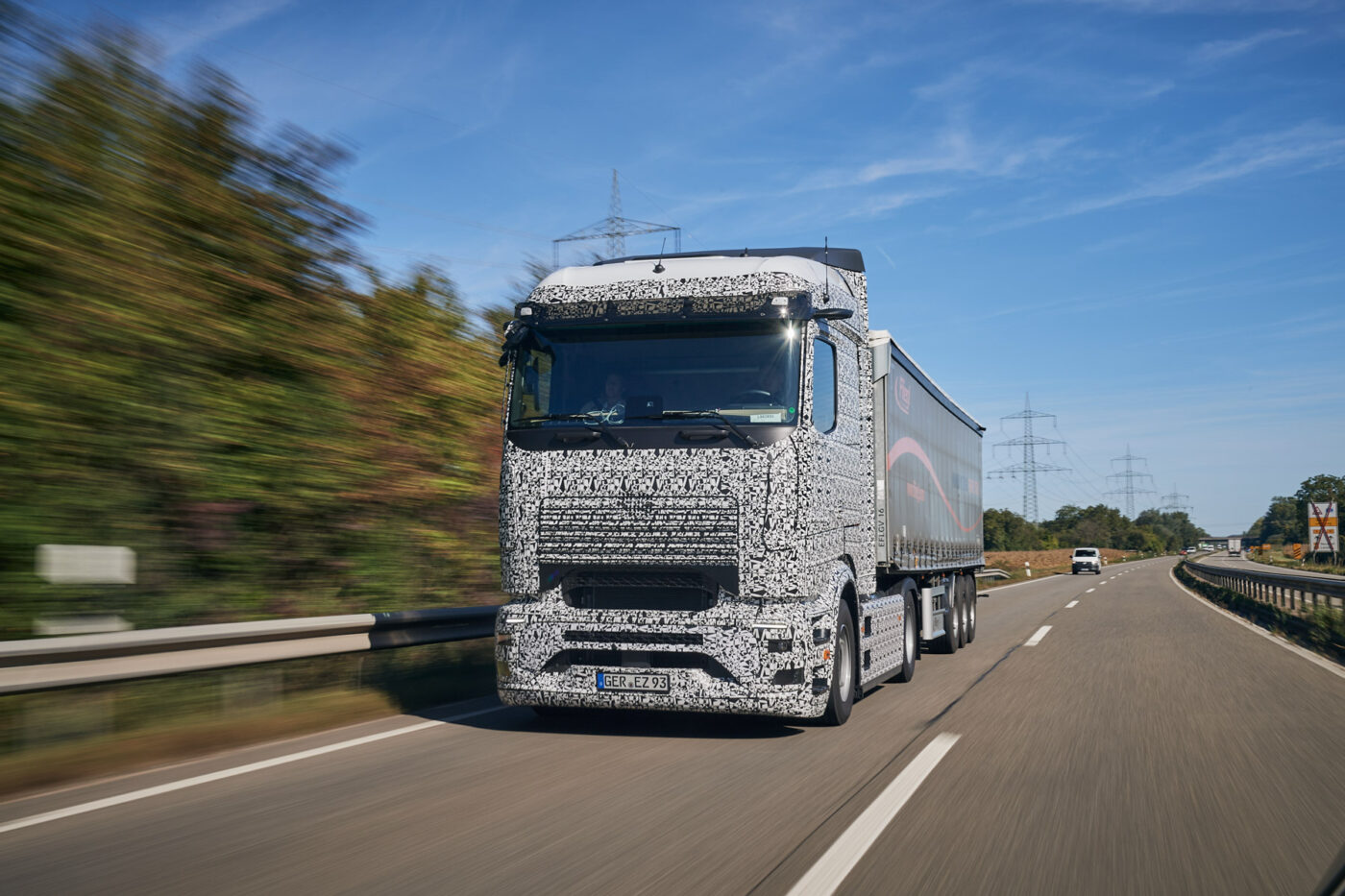
Open the door and climb up the few steps into the cabin. I am greeted by Tobias Zaehrl, development engineer for electric powertrains at Daimler Truck AG. He sat at the wheel during our little excursion – and greeted me with the words that the interior “is not yet representative like this” of the final product. That is obvious, considering the measuring equipment and cables between the two seats, which give the development department feedback on the prototype’s performance. Otherwise, the cabin hardly differs from other long-distance cabs at first glance: two seats, a bed, and a functionally robust cockpit.
It quickly becomes apparent that we are still dealing with a baby truck: our specimen has only covered a tender 350 kilometres. “This one wasn’t in Spain for testing during the summer. The prototypes used there have a few 1,000 kilometres on the clock,” said Tobias Zaehrl as he started the engine. The articulated lorry starts up smoothly and gets in line with factory traffic.
The trailer bears the inscription ‘Fliegl Fahrzeugbau GmbH,’ a manufacturer based in Triptis, Germany. “We’re 40 tonnes, by the way,” Zaehrl comments as he accelerates beyond the factory gate towards the country road. It remains quiet in the cab, with no vibrating or audibly working engine. 40 tonnes? “What have we loaded?” I ask. “Gravel!”
The differences to the medium-sized eActros truck are mainly purpose-related, and thus the long-haul cab differs from the eActros 300/400 bedless cab. The substructure (with the battery housing; more on this at the world premiere) and the future charging were redesigned: the 600 will be more dependent on public charging for its long distances and equipped with an MCS connection for this purpose. That differs from the smaller eActros with CCS port, which usually charges overnight in the depot. Zaehrl says “car chargers with CCS” currently damper the 600’s prototype journeys. No wonder. Typically, 300 kW is the limit for high-power charging for passenger cars. 400 kW chargers are still relatively rare. So, it is about time for a megawatt charging network for trucks and coaches.
On the off-ramp around Wörth, we briefly reach 80 kph – the maximum speed for trucks on German motorways. The truck hums steadily. According to Zaehrl, the motors of the electric colossus should work unnoticed, even on uphill gradients. Humming, loud feedback? No such thing. The eActros 600 is electronically limited to 89 kph. We also learn that “the electronics architecture remains the same” as ICE counterparts. Zaehrl explains that truck drivers will not have to change the proven display and assistance systems in the 600. Only a power meter replaces the rev counter in the cockpit, and a battery charge indicator replaces the fuel gauge.
As we return through the gate to the main plant, Daimler Truck sends another 40-tonne truck from the prototype family on an Alpine test drive. Specifically, the model completed the route from Stuttgart via the “Albaufstieg” on the Aichelberg, Kufstein and Brenner motorway to Bolzano in South Tyrol. “Despite the demanding topography, the electric truck managed the 530-kilometre route completely without intermediate charging and arrived in Bolzano after about seven hours of driving,” the Stuttgart-based company says.
After charging, the engineers started the journey home – again without intermediate charging and with around 40 tonnes. In conclusion, the fully loaded eActros 600 covered over 1,000 kilometres with one charging stop.
Translation by Carla Westerheide

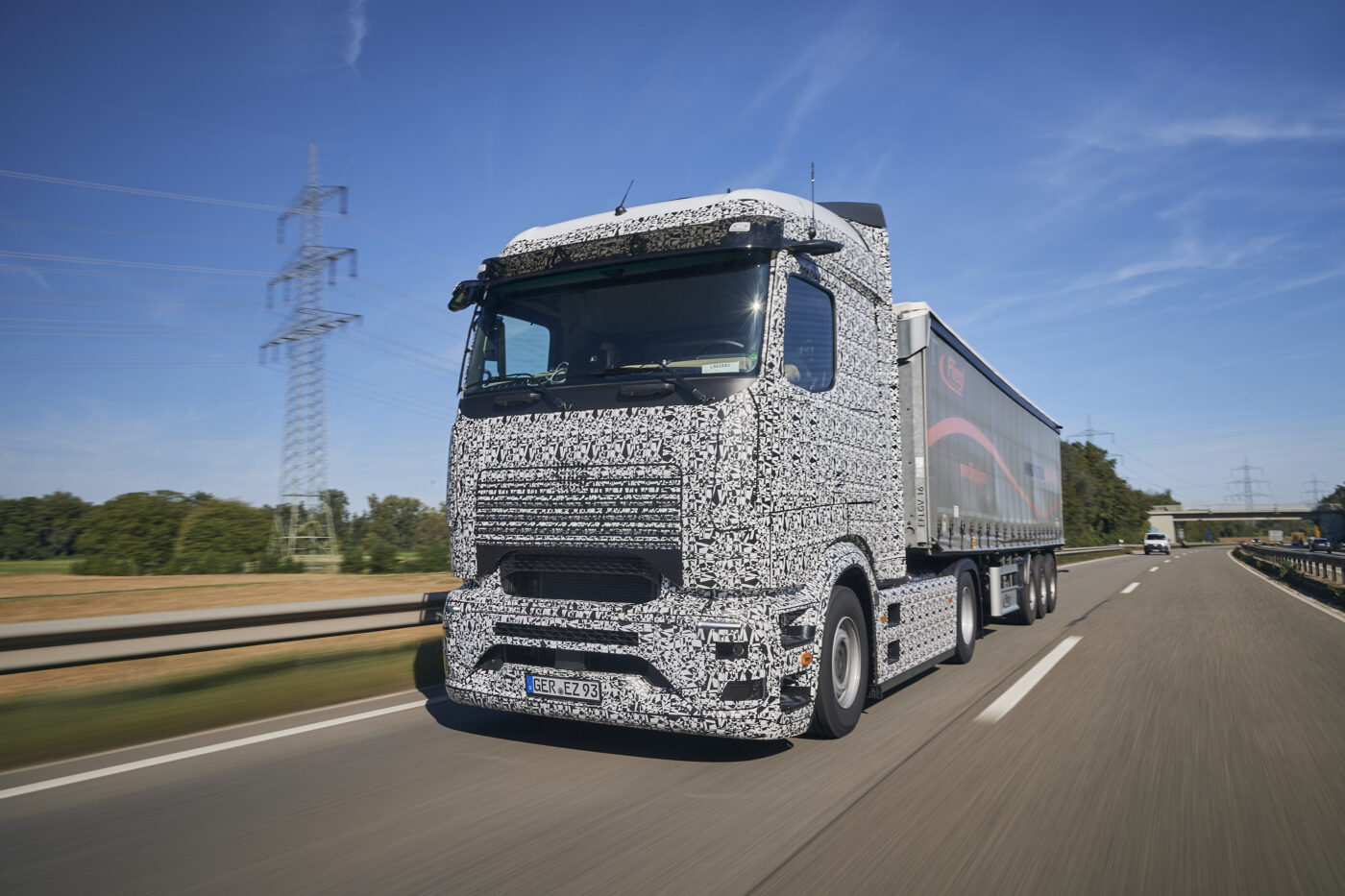
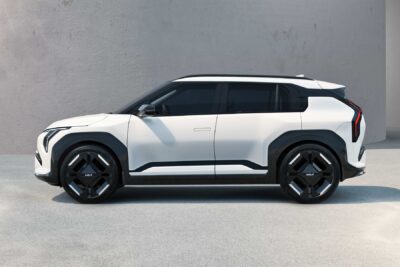

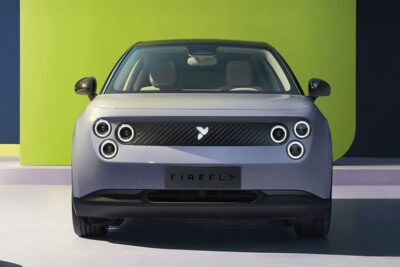
0 Comments